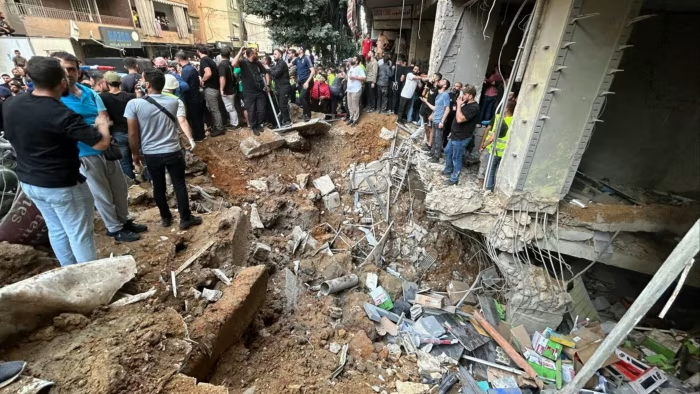As Ceasefire Talks Resume in Egypt, Israel‘s Army Redeploys, Inviting Speculation on the Future Course of the Conflict
In a notable development amidst the ongoing strife in Gaza, the Israel Defense Forces (IDF) announced a withdrawal of its ground forces from the southern reaches of the embattled territory. Cast by military officials as a “tactical” maneuver, this decision punctuates a protracted, intense four-month engagement in the southern city of Khan Younis.
The IDF’s strategic repositioning leaves two brigades within the northern half of the Gaza Strip and a newly established corridor at Wadi Gaza—an artery designed, according to the IDF, to “preserve the IDF’s freedom of action and its ability to conduct precise intelligence-based operations.” This statement from the military spokesperson on Sunday subtly emphasizes the dynamic nature of the IDF’s combat strategy, stressing the continuous adaptation to emerging realities on the ground.
This move surfaces as delegations from Hamas and Israel embark on a new round of ceasefire talks in Egypt, fuelling diverse interpretations of Israel’s military objectives and raising questions about the future direction of the war.
Analysts are pondering whether this withdrawal represents a true de-escalation of hostilities or merely a temporary respite for Israeli reservists who have endured the recent burden of combat. Insiders suggest that the “tactical reasons” cited for this retraction of ground personnel speak to a possible recalibration of Israel’s military engagement—a recalibration motivated by an array of complex operational, political, and humanitarian factors.
The ravaged city of Khan Younis stands as a stark testament to the toll that the conflict has exacted on infrastructure and human life. There is a consensus that the intensity of fighting has exceeded sustainable thresholds. These are not only the physical limits of the reservists but also the limits of international tolerance for ongoing hostilities, which have been stretched to breaking point.
Israel’s partial redeployment also adds a dimension of strategic ambiguity in the conduct of warfare. Maintaining a military presence in the northern Gaza Strip while withdrawing from the south may serve multiple purposes. Such positioning not only allows for rapid redeployment should hostilities escalate again but also fortifies Israel’s hand in ceasefire negotiations, with a continued military footprint serving as leverage at the negotiating table.
The preservation of a corridor at Wadi Gaza underscores Israel’s commitment to maintaining operative readiness. This demarcation, effectively splitting the Palestinian territory, could serve both as a buffer zone to preempt future escalations and a vantage point for surveillance to forestall potential threats.
An Olive Branch Extended
Observers note that this drawdown of troops arrives at a juncture fraught with diplomatic activity. Ceasefire talks brokered by Egypt represent a potential pivot in a saga of bloodshed, and Israel’s military decisions align with a broader array of geopolitical considerations. An environment conducive to negotiations is a prerequisite to any substantive dialogue, and a reduction in military presence could be interpreted as an olive branch extending towards the semblance of peace, or at the very least, an attenuated conflict.
As Israeli and Hamas delegations weave through the complexities of dialogue in Egypt, the international community watches with vigilance. There exists a cautious optimism interlaced with the pragmatic understanding that the path to a sustainable ceasefire—and eventually peace—is fraught with historical disappointments and distrust. Yet, the urgency of this moment is underscored by the unrelenting human cost that the war has imposed.
In the broader context, the IDF’s troop movement reflects a growing recognition of the multifaceted nature of modern warfare—where military might must grapple with diplomatic pressures, international law, public perception, and the unyielding spotlight of global media. The IDF’s emphasis on maintaining precise intelligence-based operations alludes to a more nuanced approach to conflict, potentially signaling a shift from attrition warfare to a more surgical and intelligence-driven paradigm.
The withdrawal of ground forces to regroup could also hint at an introspective operational review. Continuous combat takes a toll not only on the reservists and their families but also on military strategy, logistics, and resources. The cognitive load of command decision-making in a prolonged conflict necessitates periods of reassessment to ensure that the objectives remain clear and that the means employed are expedient and effective.
However, the promise of tactical shifts does not assuage the trepidation of the citizens who reside within the fragile borders of the conflict zone. For inhabitants of southern Gaza, the IDF’s departure may present a momentary sigh of relief, yet the scars of warfare and the dread of what the future may bear persist. Many are left to wonder if the quieting of Israeli tanks and troops is a prelude to a lasting calm or the calm before another storm of military engagement.
For the Israeli reservists returning from the front lines, the respite may afford a moment of reprieve and reflection about the nature and cost of the conflict they have been embroiled in. Yet, the psychological residue of relentless warfare will likely linger, manifesting in the national consciousness and the individual stories of those who fought.
At the negotiation table in Egypt, delegates are faced with the weighty task of reconciling immediate security concerns with long-term peace objectives. The effectiveness of these talks will be measured not only by the ability to broker a ceasefire but also by addressing the underlying causes that perpetuate the cycle of violence in the region.
The human dimension of the conflict is ever-present in these discussions, with the plight of the Gaza Strip’s inhabitants and the demand for a resolution to their dire humanitarian situation serving as a stark reminder of the necessity of lasting peace. A balance between Israel’s security imperatives and the Palestinians’ right to life, dignity, and self-determination lies at the heart of these complex deliberations.








